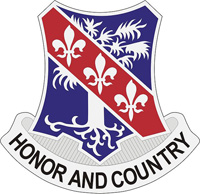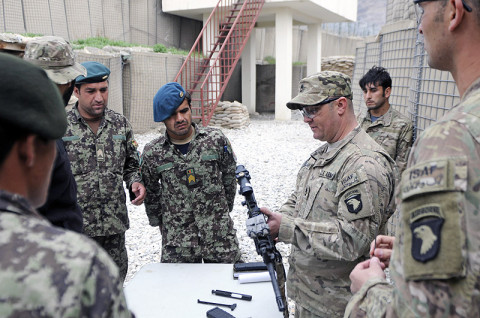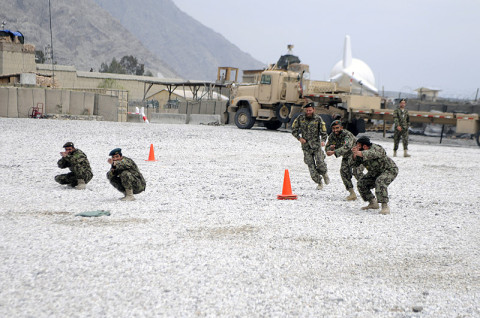Written by Sgt. Jon Heinrich
1st Brigade Combat Team, 101st Airborne Division (AA) Public Affairs


Jalalabad Airfield, Afghanistan – Heavy clouds and a chance of rain, conditions any soldier would say are good for training.
These are the conditions Afghan National Army soldiers from 4th Combat Support Kandak, 2nd Brigade, 201st Corps, experienced as they conducted their latest training with U.S. Army soldiers from Security Forces Advisory and Assistance Team Phalanx, 1st Brigade Combat Team, 101st Airborne Division, March 12th, at Combat Outpost Fortress, Kunar province, Afghanistan.

“That being medical first-aid, basic familiarization with their individual weapon systems, react to contact, both indirect and direct, use of a radio system and map reading skills,” Craig said.
“And what we’re trying to do is have a uniformed standard for those five tasks we’ve identified and train them on those,” Craig added.
There were 25 ANA soldiers that participated in the training, moving from each station in a round-robin style.
“Our ultimate goal is to train a cadre of noncommissioned officers who will be able to train these tasks to the rest of their soldiers,” Craig said. “A little rough for the first day, but we’ll do it again here next week and it should go smoothly.”
Craig also said they try to do the training at least once a week. He hopes to see the noncommissioned officers they train take over as “trainers” while the U.S. stands back and provides advice and oversight.

“They prep their own training schedules and we’ve served as trainers on various tasks. Whatever the company commander wants to see their troops trained on,” Craig said.
Craig reflected on the team’s performance during the training event by saying that his trainers are very good at their job and the key to mission success is each soldier understanding their task and purpose.
“They [ANA soldiers] know their weapon systems; they know their commo [communications] systems very well,” said Craig. “They understand the basic concepts of combat maneuver.”
“The ANA soldiers excel in almost all areas, but they were most interested in map reading skills,” Craig said. “They’ll definitely sharpen their map skills because they’ll receive training every week.”
“We’re also working on logistics,” Craig added. “Mainly understanding and using their logistics system and finding ways to basically work through the system.”
“They have their own shortcuts so we’re trying to help them out and find better ways to help their system work,” Craig mentioned. “We use the SFAAT teams at the kandak, brigade and corps echelons to help track the ANA logistical flow, and try to identify and solve the problems in their supply chain.”
In all, the days training lasted several hours and left everyone involved satisfied with the progress being made.
“I thought it was good training,” said U.S. Army Sgt. Victor Gueits, the communications noncommissioned officers for Team Phalanx. “Just getting them familiarized with a basic understanding of map reading, weapons training, and so on.”
Gueits said training the ANA was really easy since they were already familiar with most of the tasks.


